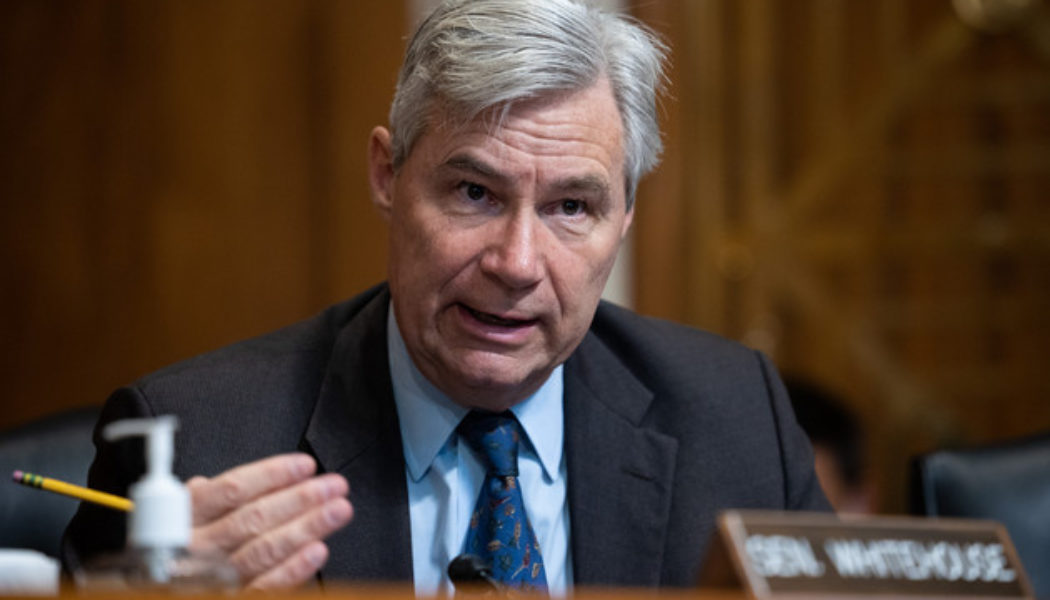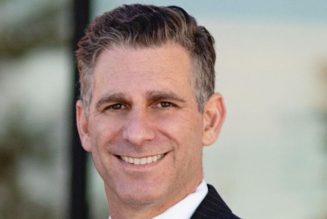While greens hope Thursday’s ruling could bring new urgency to a Capitol Hill push for sizable clean energy incentives, the doors to major federal action are either shut or closing rapidly in both Congress and the executive branch. That’s left them looking for alternatives — no matter that Democrats nominally remain in charge in the capital.
On the other hand, relying on the states that led the U.S. climate fight during Donald Trump’s presidency won’t get the nation to Biden’s target of aggressively cutting greenhouse gases by 2030.
“That’s not going to be enough,” Goldfuss said. “We knew that under Trump, too.”
At least when Goldfuss was in the White House, climate campaigners had the high court on its side: Rulings in 2007 and 2014 gave EPA wide latitude to wield the Clean Air Act to regulate greenhouse gases. But Thursday’s 6-3 decision by the Supreme Court’s conservative majority curtailed the EPA’s ability to regulate carbon dioxide from power plants while indicating it would restrict future broad greenhouse gas rules.
To climate advocates, who had anticipated the ruling for months, the decision was the latest in a series of factors making it clear they would need to look beyond Washington for ways to reach their goals.
“We don’t have to pretend anymore that this is a country that’s united,” Elizabeth Yeampierre, executive director of Brooklyn-based environmental justice organization UPROSE, said in a recent interview.
As for the broader goal of solving climate change and addressing environmental justice, she said, “Thinking about it nationally is a little unwieldy.”
At the state and local levels, battles on environmental justice often center on individual power plants, factories and other facilities that produce pollution such as mercury, soot and ozone. The EPA still has the authority to regulate those pollutants despite Thursday’s decision, though the court raised uncertainties about how much leeway the agency has for future rules.
The justices have “created an entirely new avenue of challenge for polluters to go at regulators,” Sen. Sheldon Whitehouse (D-R.I.) said in an interview Thursday. Still, he implored the Biden administration to plow ahead with ambitious environmental rules, saying the court decision “leaves plenty of well-traveled roads for the EPA to follow.”
A more pervasive shift in the environmental movement is also at work: Much of the momentum for climate organizing has shifted to fights against pollution that disproportionately burdens low-income areas and people of color.
Environmental justice groups fighting these kinds of battles have seen a surge of funding in recent years, including a $100 million commitment this spring from the Donors of Color Network.
That change, in turn, has brought a civil rights organizing energy that many in the environmental movement see as necessary to making greater climate inroads in red or purple states such as Georgia, North Carolina, Michigan and Arizona. It offers less of a leading role, both in activism and fundraising, to the national environmental groups that have long called the shots for green advocacy in Washington.
“Most of the foundations realize the Big Greens are part of the solution but that they have been funding them at a ridiculous scale,” said Jess Montejano, chief operating officer with Riff City Strategies, a communications firm that works with philanthropies such the Kresge Foundation and Mosaic Fund. “If just funding those guys was the solution we would have had a lot more progress on climate to date.”
Green activists also plan to lean on their own coalitions as they swing back to the states, such as the U.S. Climate Alliance, which formed as a response to the Trump administration’s backslide on climate.
With governors from 23 states and Puerto Rico as members, the alliance recently hired former EPA official Casey Katims to lead it through a refresh as the federal outlook dims. It plans to work as a policy and legislative clearinghouse, developing model bills and regulations to advance through member states.
Tough climate rules in states like California and New York can bring entire markets along through their sheer size and economic heft, noted Whitehouse and Rep. Jared Huffman (D-Calif.).
“Congress is not exactly a productive place these days,” Huffman said, though he cautioned: “Climate activists cannot ignore D.C. They just have to recalibrate.”
That’s in part because many of the states where climate action is needed face recalcitrant legislatures and even governors, said John Podesta, the board chairman of the Center for American Progress, in an interview after the Supreme Court ruling. He said states in the upper Midwest, Georgia, North Carolina and Arizona will “determine the fate of the country,” and that the court’s decision will lead to “accelerated” organizing in those battlegrounds.
“What this court term has demonstrated and made real for people is what that move to the hard right really looks like,” Podesta said.
That is why the advocacy model is shifting to embrace more partnerships with environmental justice organizations with a history of engagement and connections in local battles in states often opposed to sweeping climate policies. Hive Fund, a philanthropy that received $43 million from the Bezos Earth Fund, specifically focuses on funding groups in Texas, Louisiana, Georgia and North Carolina — states whose emissions are key to addressing climate change.
“There is no path to the U.S. meeting its climate goals if we don’t work in these places that have always been thought of as too hard or too difficult,” Hive Fund co-Director Melanie Allen said.
The shift to states and local communities is an acceleration of an overall trend in the past several years as more big green organizations sought to strengthen coalitions with environmental justice groups, said John Walke, director of the clean air, climate and clean energy program at the Natural Resources Defense Council.
The environmental legal group Earthjustice recently added staff to coordinate with environmental justice groups. Jeremy Orr, who leads that effort as director of litigation and advocacy partnerships, said the effort tracks with developments across the environmental movement, with national groups “trying to move resources to the actual environmental justice groups to get this work done.”
Many organizations are also staffing up in states to coordinate spending from the $1.2 trillion infrastructure law to ensure that governors don’t bungle what may amount to the Biden administration’s largest legislative accomplishment on climate.
Evergreen Action, an offshoot of Washington Gov. Jay Inslee’s short-lived climate-focused 2020 presidential run, hired staff in Michigan, Minnesota and Wisconsin to help them maximize clean energy investments from that law.
The Environmental Defense Fund has leaned into a states affairs program that works in Louisiana, Texas, North Carolina and nine other states, said Elizabeth Gore, the group’s senior vice president of political affairs. One of EDF’s major initiatives is shepherding infrastructure dollars.
“Work at the state level and the subnational level is going to continue and probably expand — and that’s going to happen regardless of the election and the makeup in Washington,” she said.
At the federal level, most advocates are hitching their hopes to EPA, saying the court’s ruling doesn’t take the agency totally out of the climate push.
However, the ruling does mean the agency may face better legal odds attacking greenhouse gases through other pathways, by fighting on the side of environmental justice groups trying to shut down pollution sources that pose health risks. It can do that by issuing regulations to tamp down on pollutants such as acid-rain-causing nitrogen oxides, control wastewater discharges from power plants and improve disposal of coal ash, a byproduct of burning coal for electricity.
“Power plant by power plant, the agency is going to have to go after these polluters, which is a really inefficient and challenging way to do it,” Huffman said.
Taken together, these kinds of rules could push power companies to replace their coal- and gas-burning plants with cleaner sources of energy.
“If some of these facilities decide that is not worth investing in and you get an expedited retirement, that’s the best tool for reducing greenhouse gas emissions,” EPA Administrator Michael Regan told reporters in March, hinting at the new strategy. The agency is expected to issue its separate proposals for regulating greenhouse gas emissions at existing and new power plants in March 2023. It plans to reconsider national standards for soot in March 2023 and for ozone in April 2023.
While Regan has hinted at deploying more health-based standards to achieve carbon reductions, his agency has been slow to issue major rules. It has not issued final rules on coal-fired power plants, natural gas-fired power plants, heavy duty vehicles or methane emissions from oil and gas production. And environmentalists broadly criticized the one rule it has issued, on light-duty vehicles, as weaker than California’s standards.
People close to the White House see EPA playing a major role with “full backing from the White House,” said Podesta, whom Obama brought into the White House to revive a moribund climate strategy. Still, the implications of the court’s decision leave “very little confidence” in future federal greenhouse gas regulations surviving the court, he said.
“That doesn’t mean they should stop from acting. But there’s no way I think to bulletproof regulations from a very activist extremist court,” Podesta said.
Alex Guillen contributed to this report.
[flexi-common-toolbar] [flexi-form class=”flexi_form_style” title=”Submit to Flexi” name=”my_form” ajax=”true”][flexi-form-tag type=”post_title” class=”fl-input” title=”Title” value=”” required=”true”][flexi-form-tag type=”category” title=”Select category”][flexi-form-tag type=”tag” title=”Insert tag”][flexi-form-tag type=”article” class=”fl-textarea” title=”Description” ][flexi-form-tag type=”file” title=”Select file” required=”true”][flexi-form-tag type=”submit” name=”submit” value=”Submit Now”] [/flexi-form]









